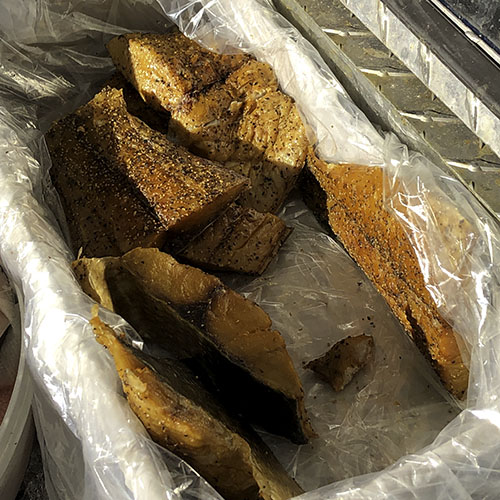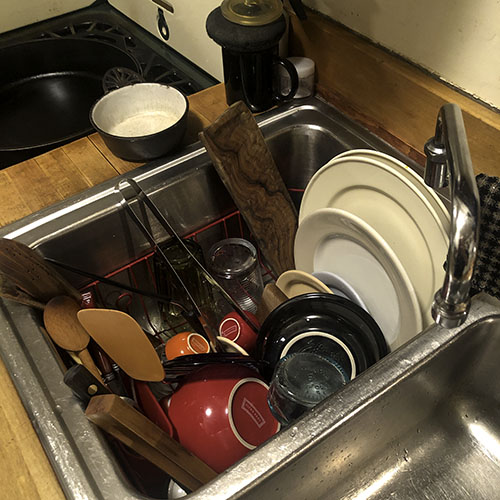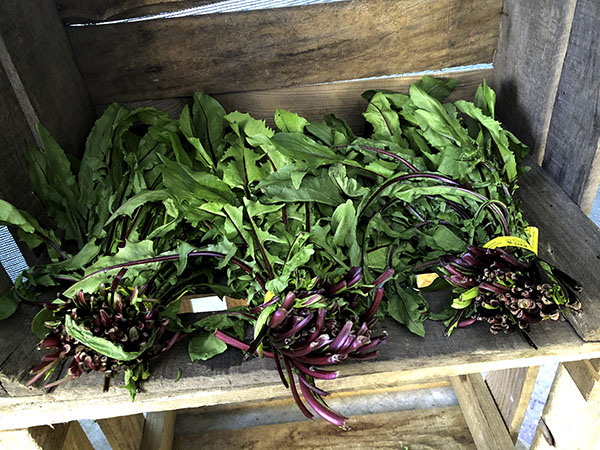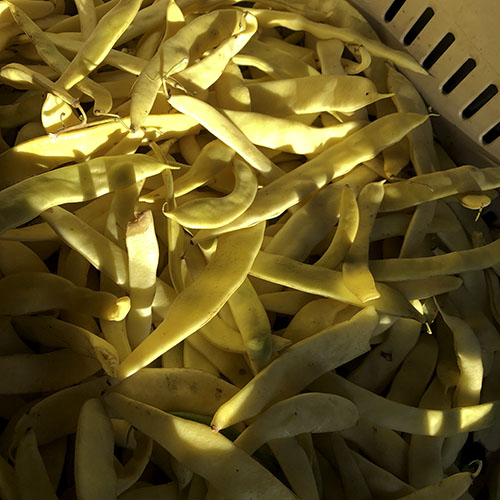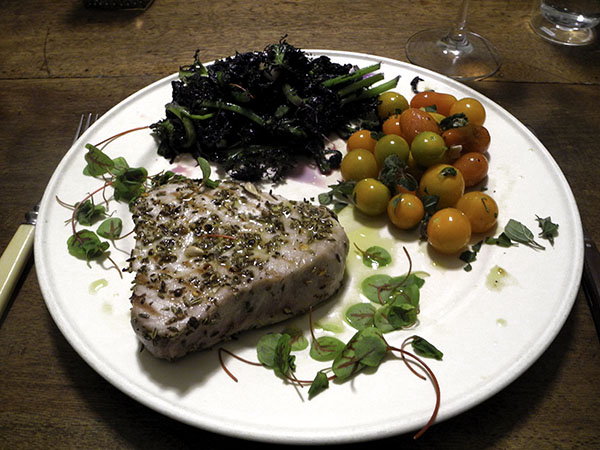
This tuna dish is incredibly easy to assemble, and it’s always a huge treat, but this time it was heaven.
- two 7 or 8-ounce yellowfin tuna steaks from P.E. & D.D. Seafood, rinsed, dried, tops and bottoms seasoned with local sea salt produced by the fisherman himself and freshly-ground black pepper, ‘paved’ with a mixture of less than a tablespoon of some incredibly pungent dried Semi di Finocchietto Ibleo [wild Sicilian fennel seed] harvested in the Iblei Mountains, from Eataly Flatiron, and a little dried Itria-Sirissi chili, pepperoncino di Sardegna intero from Buon Italia in the Chelsea Market [both first crushed together in a porcelain mortar and pestle], plus a very small amount of dried golden habanada pepper, the steaks pan-grilled above a medium-high flame for little more than a minute or so on each side, finished on the plates with a good squeeze of the juice of an organic California lemon from Chelsea Whole Foods Market, garnished with micro red-vein sorrel from Two Guys from Woodbridge, finished with a drizzle of Chelsea Whole Foods Market Portuguese house olive oil

- a mix of subtly different tones of small cherry tomatoes (14 ounces) from Norwich Meadows Farm, washed, dried, each punctured at least once with a steel trussing pin, heated in a little olive oil inside a small copper skillet, seasoned with salt and Pepper, and mixed with a little chopped fresh oregano from Rise & Root Farm

- a bouquet of beautiful red frill mustard from Norwich Meadows Farm washed and drained in several changes of water, wilted in a little olive oil in which several cloves of ‘Chesnok Red’ garlic from Alewife Farm had been allowed to sweat a bit, seasoned with salt and pepper and finished on the plates with a drizzle of olive oil and a squeeze of lemon
- the mix of sauces on the plates called for some bread, in this case thin slices of a Lost Bread Co. loaf of Buck Honey Rye (rye, malted buckwheat groats, honey, water, and salt)
- the wine was a New York (Hudson River/Pine Bush) rosé, the unfiltered Wild Arc Farm Cabernet Franc Rosé 2017, Bruynswick Vineyard, which we had purchased from the vintners themselves last weekend
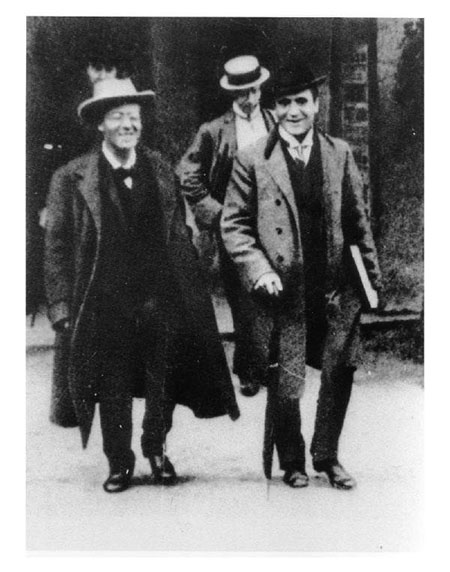
- DJing these meals (almost entirely Barry’s responsibilty) isn’t always as easy as we make it look; on this particular evening we began and stopped 5 different recordings before we came up with this incredible winner: a remastered 1961 recording of a magnificent performance of Gustav Mahler’s symphony, No. 1 in D Major, the Columbia Symphony Orchestra conducted by the composer’s friend and champion Bruno Walter, who was at the composer’s deathbed in Vienna 1911 [and that’s right, a world class symphony orchestra endowed by a corporate radio and TV station; European nations still have them, and Germany has a total of 14]
[image of Mahler and Walter from the Mahler Foundation achive]

